What is happening around us?
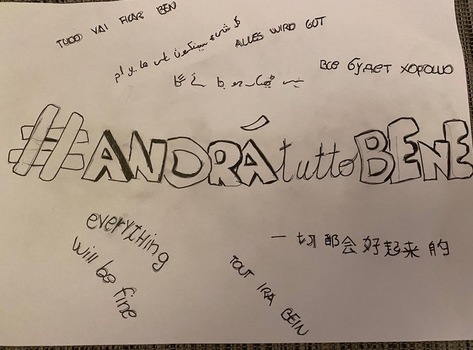
In these days and difficult period, what is happening around us? What has changed in just two weeks? Italy is living in difficult and unfavourable conditions created by Convid-19, known as coronavirus? And how is life outside Italy, in Europe and in the world?
In Italy schools have been closed since 24th February 2020, students have been at home for about four weeks now and they feel a little confused and puzzled.
Since the virus came here, all people started to get scared and take remedial actions. When there were only two or three people infected, it was not a drama but now there is no one outside in the streets or in the parks, all citizens are afraid of being infected.
The government took restricted and strict actions for all the country: they closed all schools and universities, bars and restaurants, they stopped all sports events and training, religious celebrations and recreational activities were forbidden to avoid any contact among people, to prevent and to reduce the infection.
A great part of Europe has a similar situation to the one in Italy and we can only affirm:
“Everything will be fine!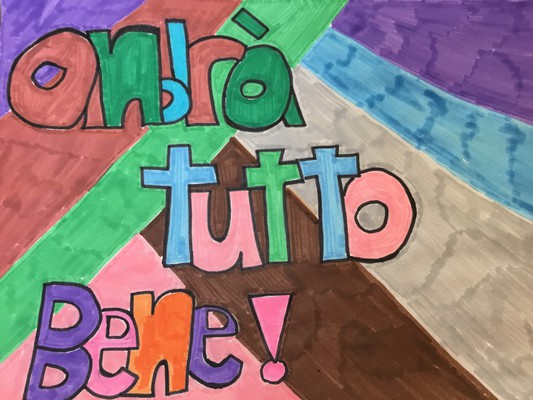
Coronavirus is now spreading in many parts of the world but scientists and experts are struggling to solve this pandemic; doctors and nurses are working hard - day and night - to try to find a solution and they will not get tired until they have found one, so reassure yourself and enjoy your stay at home.
Before this critical event, students considered school and education as an obligation and a duty, now being compelled to stay at home, they realise it is something different: a fantastic meeting place to see friends, a great opportunity to learn new things and to share experiences.
Not being able to go to school for the first time in their life, teenagers regret that place considered a duty and look back at it as a joyful memory.
During the first days of school closures, when the infections were still restricted, students liked the decision of the Council of Ministers because it was still provisional and an unexpected holiday.
Now the situation is getting worse and worse because many people are getting ill and a lot of them are dying as a consequence of the disease, therefore students would like to return to the daily routine; going to the school, taking tests, meeting teachers and schoolmates would mean the end of this emergency.
Hoping that everything will return to the normality, we can only say “everything will be fine”.
#ISTAYATHOME
Authors: Sara Filippini and Giacomo Bonora
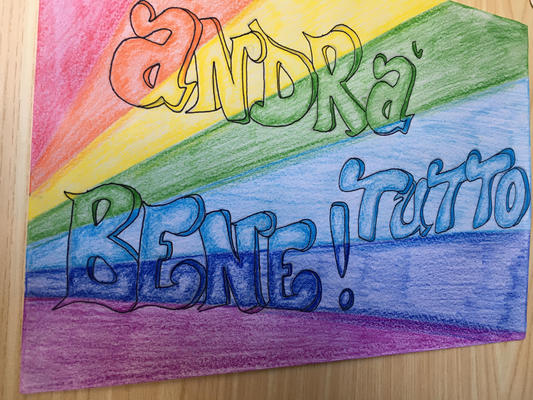
Carnival time: A festival for all people!
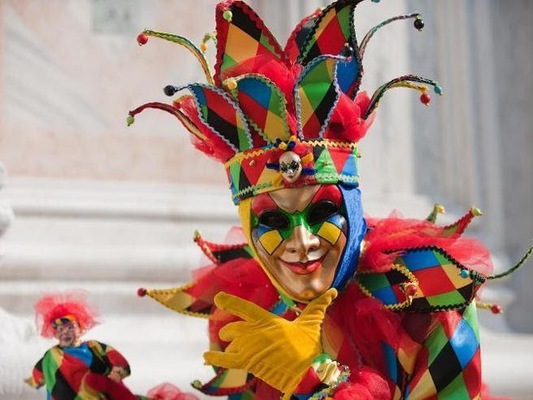
Carnival is a festival and a very old tradition full of colourful costumes, floats, masks and parties. The word Carnival comes from Latin “carnem levare” which literally means “to eliminate meat”, in fact it precedes the beginning of Lent (forty days before Easter). In the Middle Ages, it referred to a period following Epiphany season that reached its climax before midnight on Shrove Tuesday, although the origins of this festival are ancient and they date back to the Greek and Roman civilisations.
The use of a mask and a costume was a way of being equal, eliminating all social divisions, public derisions of authorities and aristocracy were also authorized.
In Italy Carnival is celebrated everywhere from the North to the South.
The city of Fano is famous for the launch of sweets: from the carnival floats chocolates and sweets are thrown to the people in the streets.
In Viareggio, in Tuscany, craftsmen make very original floats using poor materials such as papier maché (paper mixed with glue) and their masterpieces are appreciated all over the world. Every year they usually choose a topic and use their art to communicate important messages.
The city of Venice is also famous all over the world for the events related to its Carnival and it attracts tourists who come to admire great costumes and masks. Events are organised everywhere in the city, but the centre of all happenings is St Mark’s Square. On the last Sunday and the last Tuesday of Carnival, a big wooden stage in the square hosts the ceremony of the best masked costume.
In Italy there are also a lot of traditional Carnival characters.
Arlecchino has a colourful and multi-coloured costume: a jacket, trousers and a black mask on his face. Arlecchino is a servant and he is a typical mask of Bergamo, a city in the north of Italy. Colombina is his wife or girlfriend, she is a maid and she is always related to love affairs.
Pantalone is another Italian Carnival character. He comes from Venice, he is an old man, he is also mean, stingy and grumpy.
Pulcinella is a typical character from the south of Italy, from the city of Naples, He represents vices and virtues of the middle-class man. He wears a white costume and a white hat, he is slow and clumsy but sincere and frank.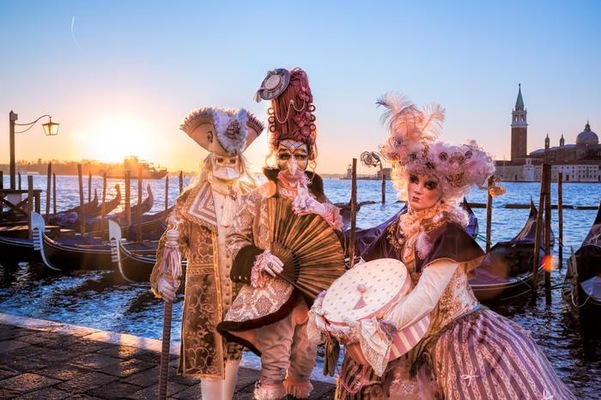
Typical Carnival sweets and cookies vary from the North to the South . You can eat delicious pastries with different shapes, cream and custard. Moving from north to south you can eat “frappe”,